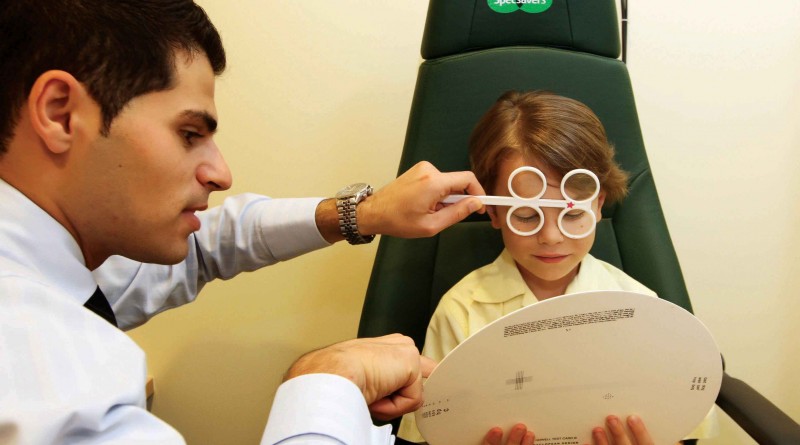Misalignment of Eyes
Strabismus known as Squint has continued to baffle the medical world for ages. If your child turns his head to look at you every time, then we have a potential candidate for squint
By Dr. Mahipal S Sachdev
Technically known as strabismus, Squint is a misalignment of the two eyes, because of which both the eyes are not able to see in the same direction, this misalignment may be constant or intermittent. Although it is most commonly seen in children, it may occur in adults too.
Causes of squint
Although the exact cause of squint is not known, it is mostly due to loss of coordination between the muscles that control the movement of the eyes. Six muscles control the movement of each eye. Each of these muscle acts along with its synergistic/antagonistic muscle of other eye to keep both the eyes aligned in a particular direction. Whenever there is loss of coordination between the muscles of two eyes, it leads to misalignment. This misalignment may be the same in all directions of gaze, or in some conditions the misalignment may be more in one direction of gaze, e.g., in squint due to nerve palsy.
In children a high refractive error, mostly hypermetropia (long sightedness) can cause an inward deviation of eye. If one of the eyes has poor vision either due to congenital cataract or any other disorder, it can also cause deviation of the eye. Thus, it becomes impartment in all cases of squint especially during childhood to rule out any other cause of visual loss.
Binocular single vision and its importance
Under normal circumstances, when both the eyes have good vision and they are aligned properly, they focus on the same object. Each of the eyes sends images of the same object, which reach the brain, where they are fused to form a single three-dimensional picture with depth perception. This is known as binocular single vision.
When the eyes are not aligned properly, each eye focuses on a different object and these signals are then sent to brain. Because two different images reach the brain, it leads to confusion. When this situation occurs, a child ignores the image coming from deviated eye, thus seeing only one image. Because of this, child loses depth perception. The suppression of this image from the deviating eye leads to poor visual development in this eye, thus leading to a condition known as Amblyopia. This is also known as Lazy Eye.
An adult is unable to ignore this image, thus seeing two images of the same object leading to diplopia or double vision.
What are the symptoms of squint?
In a child, the parents may notice the deviation of eyes. It is important to remember that the eyes of a newborn are rarely aligned at birth. Most children attain alignment at the age of 3-4 weeks. If squinting persists even after the age of one month, an ophthalmologist should be consulted for complete evaluation.
Older children may complain of some photophobia or decreased vision, and frequent blinking. Adults may have diplopia (double vision) or apparent squint.
How to diagnose squint?
Squint is diagnosed by the ophthalmologist. In some children there may be a false appearance of squint due to broad nasal bridge. An ophthalmologist would first confirm whether it is a true or false squint. If a true squint is confirmed, certain special tests are carried out to try and find out the cause and to quantify the amount of squint.
- Management of Squint:
The aims of treatment of squint are:
• Preserve or restore vision
• Straighten the eyes.
• Restore binocular vision
First of all, the eyes are checked to see if they have any refractive error that may be responsible for squint. If there is any significant refractive error present, it is treated first. In some cases (accommodative squint) a correction of refractive error is all that may be required to treat squint
Next the eyes are checked for presence of amblyopia. It is important to correct amblyopia before squint surgery as the eyes have a tendency to deviate again if amplyopia is persistent. The parents are explained about the importance of this treatment, as their cooperation is very crucial for the success of treatment.
The squint is treated by surgery of either one or both the eyes. The surgery involves weakening or strengthening of the relevant muscles to restore the balance and to get a good coordination. In some cases with double vision, prisms may be added in the glasses to ease the symptoms.
When should the squint be treated?
In a child, the treatment of squint and any associated amblyopia should be start as soon as possible. Generally speaking, the younger the age at which amblyopia treatment is initiated; the better is the chance of visual recovery. Delayed treatment may decrease the changes of good squint correction and visual recovery.
Are glasses necessary?
Yes. Surgery cannot replace the need for glasses. If the child has significant refractive error, glasses are a must. In some cases wearing glasses may correct squint. In other cases, wearing glasses help the eyes to see clearly. This clear vision is very important for the treatment of amblyopia, and also for maintaining the coordination of eyes, once they have been aligned by surgery.
Remember to get your child treated for squint at the earliest because if the child is > 5-6 yrs of age, then amblyopia / lazy eye can’t be treated. The child would then remain with poor vision in eye with squint throughout life.
(The writer is Chairman and Medical Director, Centre for Sight, New Delhi)

